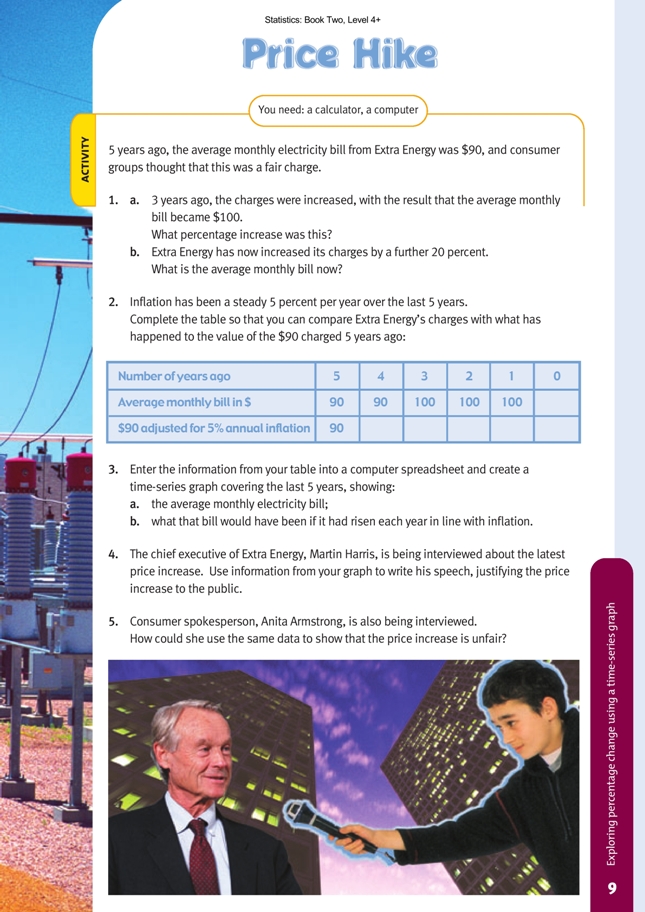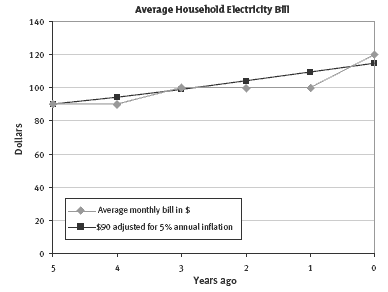This is a level 4 statistics and number activity from the Figure It Out series.
A PDF of the student activity is included.
Click on the image to enlarge it. Click again to close. Download PDF (610 KB)
find percentage increases
construct a time series graph
interpret data from a graph
FIO, Level 4+, Statistics, Book Two, Price Hike, page 9
A computer
In this activity, students calculate percentages in different ways and meet compounding percentages, perhaps for the first time. Percentage is an extremely useful concept, but students often have trouble applying it correctly.
In question 1a, the students use percentages to compare two amounts. They should divide the “new” (current) value by the “old” (original) value.
Question 1b is about increasing an amount by a given percentage. There are different ways of doing this:
• Find 20 percent of the amount and then add it to the original amount.
• Multiply by 120 and divide by 100.
• Multiply by 1.2, which is 120 ÷ 100 in its simplest form.
It is important that students come to see that multiplying by a percentage greater than 100 is the same as calculating a percentage increase and then adding it to the original amount. You may choose to discourage the use of the percentage key on calculators, because students tend to use it without understanding what it does.
In question 2, a spreadsheet formula can be used to adjust the $90 for the annual rate of inflation. In the spreadsheet below, the formula =B3*1.05 has been entered in cell C3, then the cursor used to drag the bottom right-hand corner of this cell across the row to fill the cells D3 to G3 with the inflation-adjusted values.
Other formulae would have worked equally well: =B3 + B3*0.05, or =B3*105/100.
In question 3, the students create a time-series graph using the spreadsheet data from question 2. The graph should have two lines on it: one showing the average monthly electricity bill and the other showing $90 adjusted for 5 percent annual inflation. One unusual feature of this graph is that the horizontal axis is reversed and ends with 0. The introductory section on histograms (pages 19–20) explains how to get the axis labelled correctly.
Questions 4 and 5 involve interpreting data in different ways, depending on a person’s purpose or perspective. See the Answers section for possible interpretations.
As an extension, the students could collect graphs from newspapers or magazines and see whether they could interpret them differently from the accompanying article. They could, for example, put themselves in the position of the boss instead of the employee, the house seller compared with the house buyer, the politician compared with the voter, or the manufacturer compared with the consumer.
Answers to Activity
1. a. 11.1%. (100 ÷ 90)
b. $120. (100 x 1.2)
2.
3. a.–b.
4. Answers will vary, but possible points include the fact that, for 4 years, prices have been at or below the rate of inflation, and running costs have increased. Also,
inflation will have caught up with the price increase after a year or so.
5. Answers will vary and may include the fact that the increased power price is above the rate of inflation, that this is the second price rise in 3 years, and that the price of electricity has increased by 33.3% (1/3) in 5 years.



